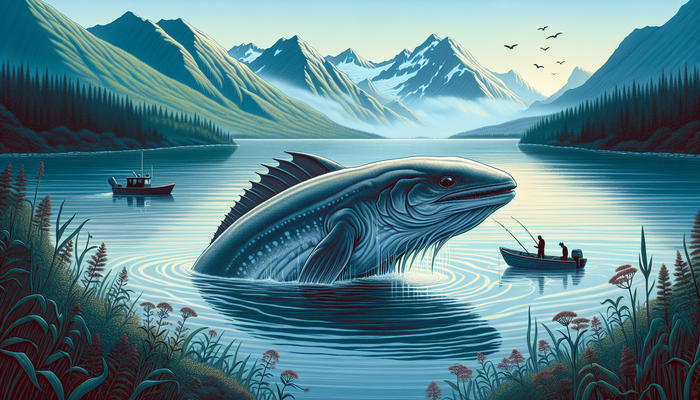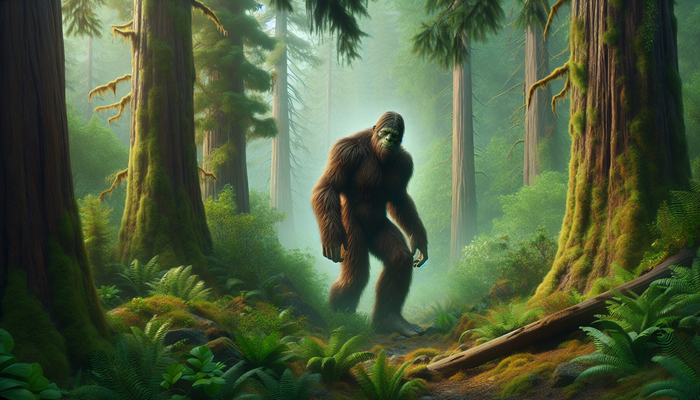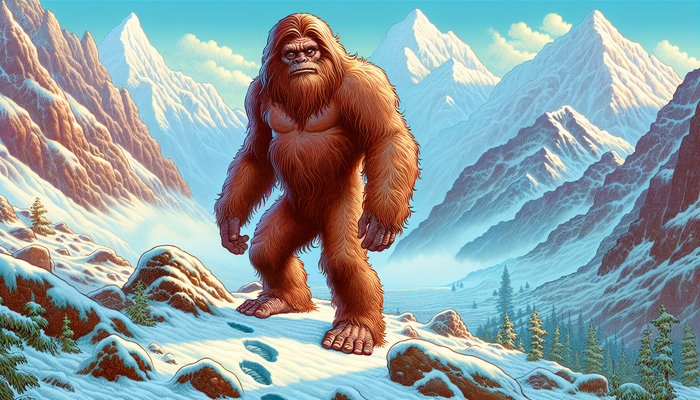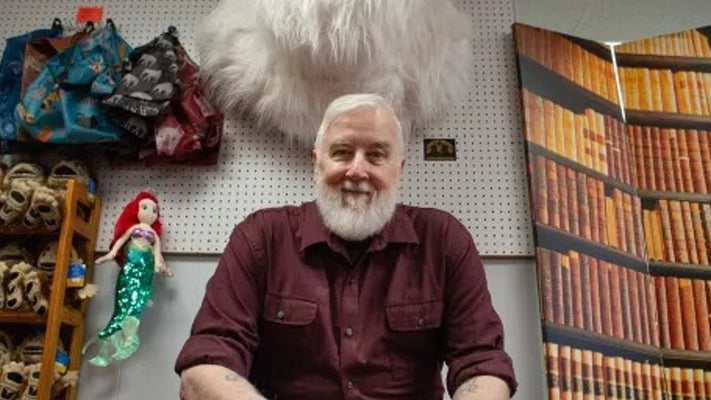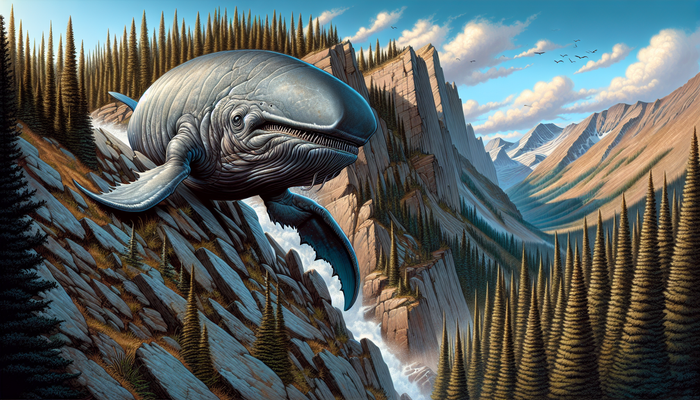The Legend of the Churubusco Turtle: Oscar's Mysterious Tale

By Lucas Jennings, Cryptozoologist
The Birth of a Legend
Our tale begins in 1898, when farmer Oscar Fulk gazed out over the seven-acre lake on his property and saw something that would change the course of Churubusco's history. There, basking in the Indiana sun, was a turtle of truly monstrous proportions. Fulk, no stranger to the local wildlife, was astounded. This wasn't just a big turtle; this was a leviathan, a prehistoric throwback that had no business existing in the modern world.
Naturally, Fulk told his neighbors about his incredible sighting. And, just as naturally, they laughed it off. After all, who'd believe a tale of a turtle the size of a dining room table? Fulk, perhaps realizing the futility of trying to convince the skeptics, eventually stopped talking about his encounter. The giant turtle, if it ever existed, slipped back into the murky waters of the lake and into obscurity.
For half a century, the legend of the giant turtle lay dormant, nothing more than a quirky local tale passed down through generations. But in July 1948, the sleeping giant was about to awaken in spectacular fashion.
The Turtle Resurfaces
Picture this: It's a warm summer day in 1948. Two local men, Ora Blue and Charley Wilson, are out fishing on what's now known as Fulk Lake. They're probably hoping for a good catch, maybe dreaming of landing a record-breaking bass. What they don't expect is to come face-to-face with a creature straight out of the Mesozoic era.
As Blue and Wilson's boat drifted lazily on the calm waters, something massive broke the surface nearby. The men would later describe a turtle of truly titanic proportions, its shell alone as wide as their boat. They estimated its weight at a staggering 500 pounds – more than some adult alligators!
This sighting could have easily gone the way of Oscar Fulk's – dismissed as a tall tale spun by bored fishermen. But fate had other plans. The current owner of the lake, one Gale Harris, heard about the sighting and was intrigued. Little did he know that this curiosity would soon become an all-consuming obsession.
Harris, initially skeptical, soon had his own encounter with the beast. While repairing his barn roof with a local reverend, he spotted something unusual in the lake. The next day, the creature reappeared, and Harris knew he wasn't seeing things. The legend of Oscar (named after the original witness, Oscar Fulk) was about to explode onto the national stage.
The Great Turtle Hunt Begins
Gale Harris was a man possessed. Once he'd seen Oscar with his own eyes, he made it his life's mission to capture the elusive creature and prove to the world that the Beast of Busco was real. What followed was a series of increasingly elaborate and desperate attempts to snare the slippery reptile.
First came the traps. Harris and his fellow turtle hunters constructed a massive funnel-shaped cage, using wooden stakes and chicken wire. The plan was simple: lure Oscar into the wide end of the funnel with bait, then watch as the narrowing passage prevented his escape. It was a good plan... on paper. In reality, Oscar proved far too clever (or perhaps too large) for such simple trickery.
As news of the hunt spread, so did the crowds. Churubusco, a town of barely 1,200 souls, suddenly found itself inundated with curiosity seekers, reporters, and would-be monster hunters. At the height of the frenzy, it's said that 400 cars an hour were streaming past the Harris farm. State police had to be called in for traffic control. Churubusco had never seen anything like it.
The media circus brought with it a parade of experts, each with their own ideas on how to catch Oscar. Professional trappers tried their luck. Scuba divers braved the murky waters, hoping for a close encounter. There was even an attempt to lure Oscar with a female sea turtle, playing on the old adage that the way to a man's heart is through his stomach – or in this case, perhaps other organs.
But Oscar remained stubbornly elusive. Each failed attempt only seemed to fuel Harris's determination. He was spending more and more time and money on the hunt, to the detriment of his farm and his health. But he couldn't stop. The Beast of Busco had become his white whale, and he was determined to harpoon it, metaphorically speaking.
The Draining of Fulk Lake
In the annals of cryptozoology, there have been many ambitious attempts to prove the existence of legendary creatures. But few can match the sheer audacity of Gale Harris's final gambit in his quest to capture Oscar: the draining of Fulk Lake itself.
By the fall of 1949, Harris had exhausted nearly every conventional method of catching a turtle, giant or otherwise. Traps had failed. Bait had proved useless. Even the allure of turtle romance hadn't been enough to coax Oscar from his watery domain. So Harris decided to take away that domain entirely.
Using pumps attached to his tractor, Harris began the Herculean task of emptying the seven-acre lake. It was a spectacle that drew thousands of onlookers, each paying an admission fee for the chance to witness history in the making. As the water level dropped, excitement mounted. Surely, any moment now, Oscar would be revealed in all his prehistoric glory.
But nature, it seems, had other plans. As the lake shrank to a mere acre in size, disaster struck. The pumps began to clog with mud, and Harris's tractor gave out under the strain. To add insult to injury, heavy rains soon refilled the lake, washing away months of effort and untold amounts of money.
The Great Turtle Hunt of 1949 ended not with a bang, but with a whimper. Harris, his health failing and his finances in ruins, was forced to abandon the search. Oscar, if he ever existed, had won. The Beast of Busco had bested every trap, eluded every hunter, and slipped away into legend.
But while the hunt may have ended in failure, its impact on Churubusco was just beginning.
Turtle Town, USA: The Birth of a Cultural Phenomenon
You might think that after such a spectacular failure to capture Oscar, Churubusco would want to forget the whole embarrassing episode. But you'd be wrong. Instead, the town embraced its brush with cryptozoological fame, transforming itself into "Turtle Town, USA."
In 1950, barely a year after the great turtle hunt ended, Churubusco held its first Turtle Days festival. It was a celebration of all things chelonian, featuring turtle races, turtle-themed floats, and enough turtle soup to feed an army (though presumably not made from any suspiciously large specimens).
The festival was an instant hit, drawing visitors from all over the state and beyond. It wasn't just a quirky local event; it was a full-blown cultural phenomenon. Suddenly, Churubusco had an identity beyond being just another small Midwestern town. It was the home of Oscar, the place where legend and reality blurred into something uniquely American.
As the years passed, the Turtle Days festival only grew in popularity. Today, it's one of Indiana's longest-running community festivals, drawing thousands of visitors each June. The event has expanded to include carnival rides, live music, and a parade, but at its heart, it's still all about celebrating Oscar and the indomitable spirit of a town that refused to let go of its fifteen minutes of fame.
But Turtle Days is more than just a fun annual event. It's become a crucial part of Churubusco's economy and community spirit. The festival raises funds for local projects, provides scholarships for students, and brings the town together in a shared celebration of its unique heritage. In embracing its turtle-centric identity, Churubusco found a way to turn a failed monster hunt into a lasting source of pride and prosperity.
Walk through Churubusco today, and you'll find Oscar's influence everywhere. There's a 15-foot concrete turtle statue greeting visitors as they enter town. The municipal building sports a turtle on its sign. Even the official town letterhead features a turtle. Oscar may have eluded capture, but his spirit is very much alive in the heart of Turtle Town, USA.
Theories and Speculations: What Was Oscar?
Now, let's address the elephant – or rather, the turtle – in the room. What exactly was Oscar? Was he real, or just a figment of overactive imaginations? Over the years, numerous theories have been proposed, each with its own passionate defenders. Let's dive into some of the most popular explanations for the Beast of Busco.
The Giant Alligator Snapping Turtle Theory
This is perhaps the most plausible explanation for Oscar's existence. Alligator snapping turtles are native to Indiana and are known to grow to impressive sizes. The largest verified specimen weighed in at 249 pounds, with unconfirmed reports of individuals reaching over 400 pounds.
Proponents of this theory argue that Oscar could have been an exceptionally large alligator snapping turtle, perhaps benefiting from ideal conditions in Fulk Lake. The description of his spiked shell and massive head certainly fits the species. Moreover, these turtles are known for their longevity, with some individuals living well over 100 years. This could explain why Oscar was first sighted in 1898 and then again 50 years later.
The Misidentification Theory
Skeptics often point out that eyewitness accounts, especially of unusual events, can be notoriously unreliable. It's possible that what Gale Harris and others saw was indeed a large turtle, but not nearly as large as they believed. The murky waters of Fulk Lake, combined with the excitement of the moment, could have led to exaggerated estimates of Oscar's size.
This theory suggests that Oscar was probably a normal, if somewhat large, snapping turtle. The frenzy surrounding the sightings and the subsequent hunt may have caused people to see what they wanted to see, rather than what was actually there.
The Hoax Theory
Some cynics have suggested that the entire Oscar saga was an elaborate hoax, perhaps concocted to bring attention (and tourist dollars) to Churubusco. However, this theory doesn't hold up well under scrutiny. Gale Harris, by all accounts, was a respected member of the community, not known for tall tales. He invested significant time and money into the search for Oscar, eventually driving himself to financial ruin. That's a level of commitment few hoaxers would be willing to make.
Moreover, the number of witnesses who claimed to have seen Oscar, including reputable out-of-town journalists, makes a coordinated hoax seem unlikely. While it's possible that some later sightings were fabricated or exaggerated as the legend grew, the core story seems to have been believed sincerely by those involved.
The Escaped Exotic Pet Theory
A more exotic explanation suggests that Oscar might have been an escaped pet or zoo animal. Large turtles from other parts of the world, such as the Galapagos tortoise or the leatherback sea turtle, can reach sizes comparable to the descriptions of Oscar. If such an animal had somehow found its way into Fulk Lake, it could explain the unusual sightings.
However, this theory has some significant flaws. Most notably, none of these species would be well-adapted to survive in an Indiana lake, especially through the cold winters. Additionally, there were no reports of missing large turtles from any nearby zoos or private collections.
The Prehistoric Survivor Theory
For those who prefer their explanations with a dash of the fantastic, there's the theory that Oscar was some kind of living fossil – a survivor from prehistoric times. Perhaps, the theory goes, a population of giant turtles survived the extinction of the dinosaurs by retreating to isolated pockets like Fulk Lake.
While this theory might make for a great science fiction novel, it's by far the least plausible explanation. There's no evidence of any turtle species of Oscar's reported size existing in the fossil record of Indiana or anywhere nearby. Moreover, a breeding population of such creatures would surely have been noticed long before 1948.
So, What Happened to Oscar?
Regardless of what Oscar truly was, one question remains: what became of him? If such a large creature really inhabited Fulk Lake, why was he never seen again after 1949?
Some locals believe that Oscar simply moved on, perhaps escaping through underground channels to other nearby bodies of water when the commotion around Fulk Lake became too much. This theory is supported by the fact that there were occasional reports of giant turtle sightings in other parts of Indiana in the years following the Churubusco incident.
A more somber theory, proposed by local turtle expert Rusty Reed, suggests that if Oscar did exist, he may have met his end during the attempts to drain Fulk Lake. Reed speculates that a turtle of Oscar's reported size would have been too large to support its own weight on land. When the lake was drained, Oscar may have become trapped in the mud and suffocated.
Of course, there's always the possibility that Oscar is still out there, lurking in the depths of Fulk Lake, waiting for the right moment to resurface and reignite the legend. After all, alligator snapping turtles are known for their longevity. If Oscar was already full-grown in 1948, who's to say he couldn't still be alive today, perhaps grown even larger in the intervening years?
The Legacy of Oscar: More Than Just a Turtle Tale
Whether Oscar was a real creature or a product of overactive imaginations, his impact on Churubusco and beyond is undeniable. The legend of the Beast of Busco has become a part of Indiana's cultural fabric, a story passed down through generations, growing and evolving with each retelling.
For Churubusco, Oscar represents more than just a local curiosity. He's become a symbol of the town's identity, a mascot that embodies the community's spirit of wonder and perseverance. The Turtle Days festival, now in its seventh decade, continues to bring the town together and attract visitors from far and wide.
But Oscar's influence extends beyond the borders of Churubusco. The story of the Beast of Busco has inspired countless articles, books, and even documentaries. It's become a staple of cryptozoology literature, often mentioned alongside more famous cryptids like Bigfoot or the Loch Ness Monster.
More broadly, Oscar's tale speaks to our enduring fascination with the unknown. In an age where it can feel like every corner of the globe has been explored and catalogued, stories like Oscar's remind us that there might still be mysteries out there, waiting to be discovered. They tap into a primal sense of wonder, a desire to believe that the world is still capable of surprising us.
The legend of Oscar also serves as a testament to the power of community storytelling. What began as one man's unusual sighting has become a shared narrative, a piece of folklore that binds the people of Churubusco together. It's a reminder of how stories shape our sense of place and identity, how they can transform a small town into something truly unique.
Moreover, Oscar's story highlights the often blurry line between fact and fiction in local legends. While the existence of a 500-pound turtle might strain credulity, the passion and conviction of those who searched for Oscar were very real. The economic impact of the hunt and the subsequent tourism boom were tangible. In this way, Oscar became real through the very act of searching for him, his legend leaving an indelible mark on the town regardless of his physical existence.
As we look to the future, it's clear that Oscar's legacy is far from over. Each year, new generations of Churubusco residents grow up with the story, adding their own interpretations and embellishments. Visitors to the town still scan the surface of Fulk Lake, hoping for a glimpse of something extraordinary. And who knows? Maybe one day, when we least expect it, a massive, prehistoric-looking head will break the surface of the water, and the hunt for the Beast of Busco will begin anew.
In the end, perhaps it doesn't matter whether Oscar was real or not. His true value lies not in his physical existence, but in the way his story has shaped a community, inspired wonder, and reminded us all that sometimes, the most important truths are the ones we choose to believe in. The legend of the Churubusco turtle stands as a testament to the enduring power of folklore, the importance of community identity, and the human need to believe in something larger than ourselves – even if that something happens to be a really, really big turtle.
From Bigfoot to UFOs: Hangar 1 Publishing Has You Covered!
Explore Untold Stories: Venture into the world of UFOs, cryptids, Bigfoot, and beyond. Every story is a journey into the extraordinary.
Immersive Book Technology: Experience real videos, sights, and sounds within our books. Its not just reading; its an adventure.



